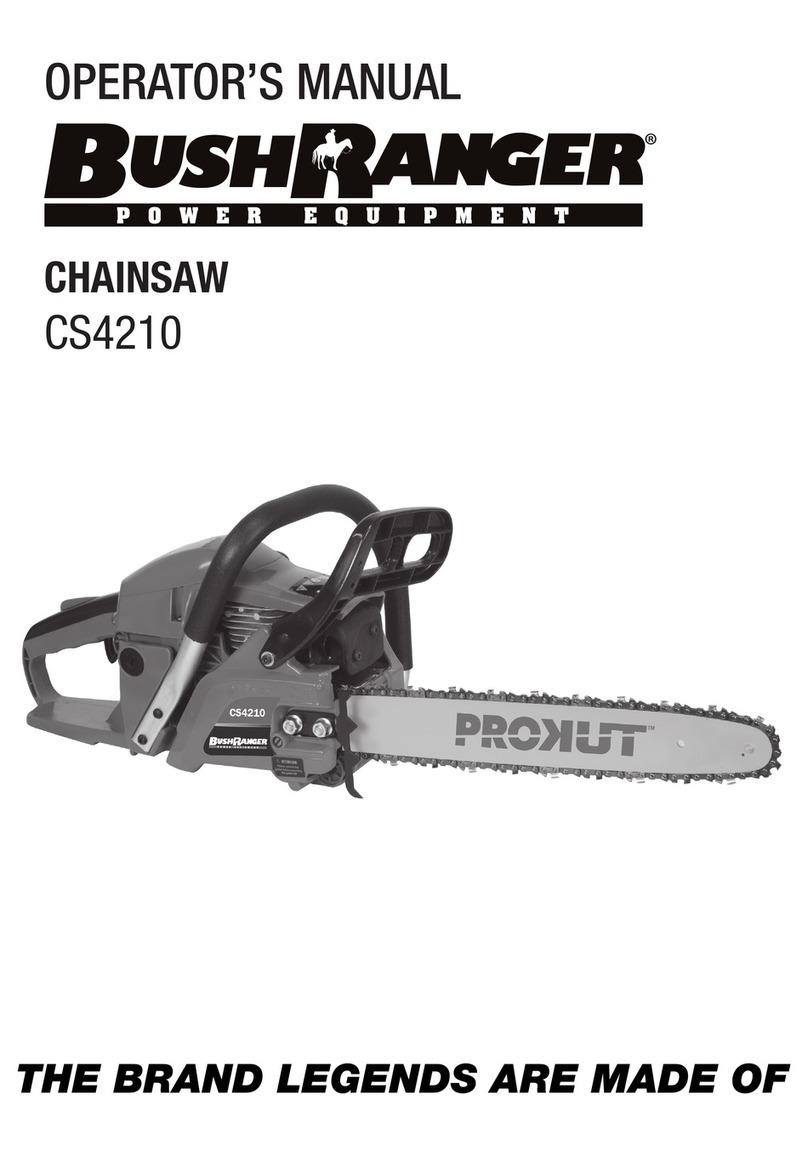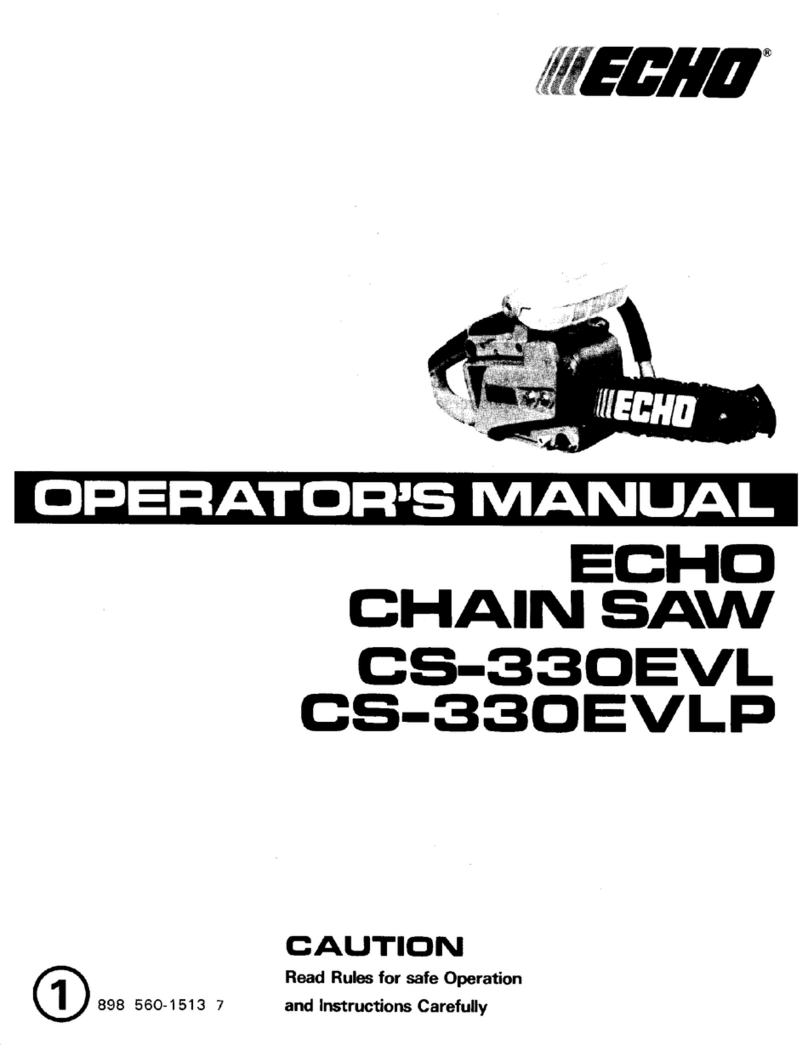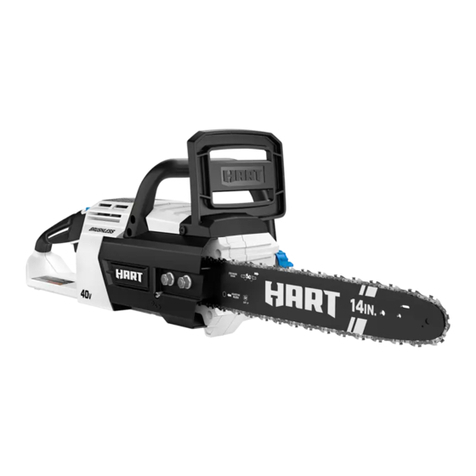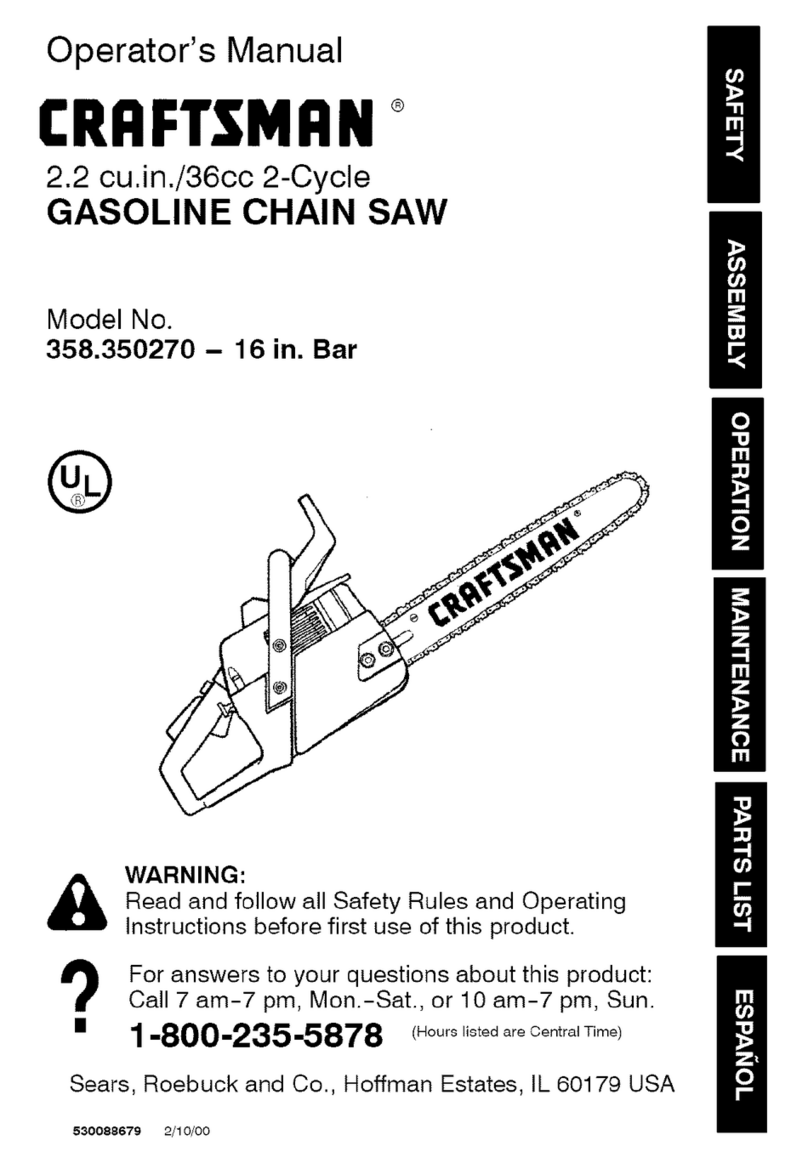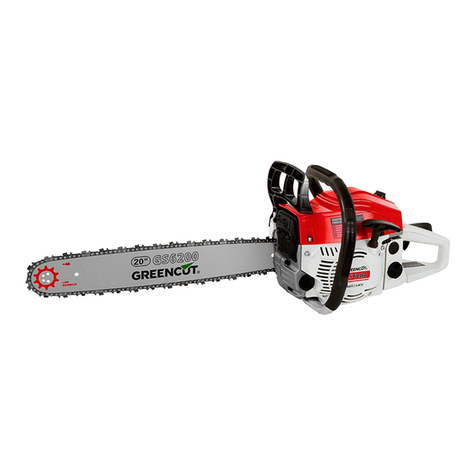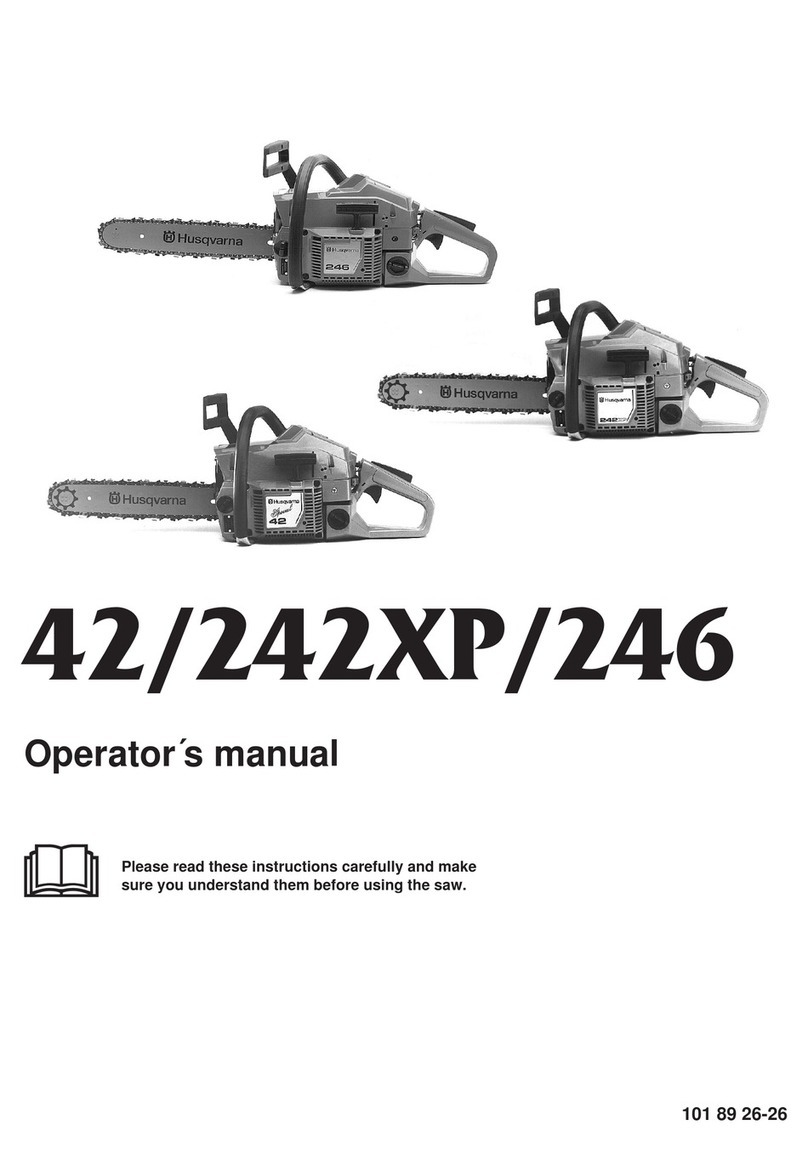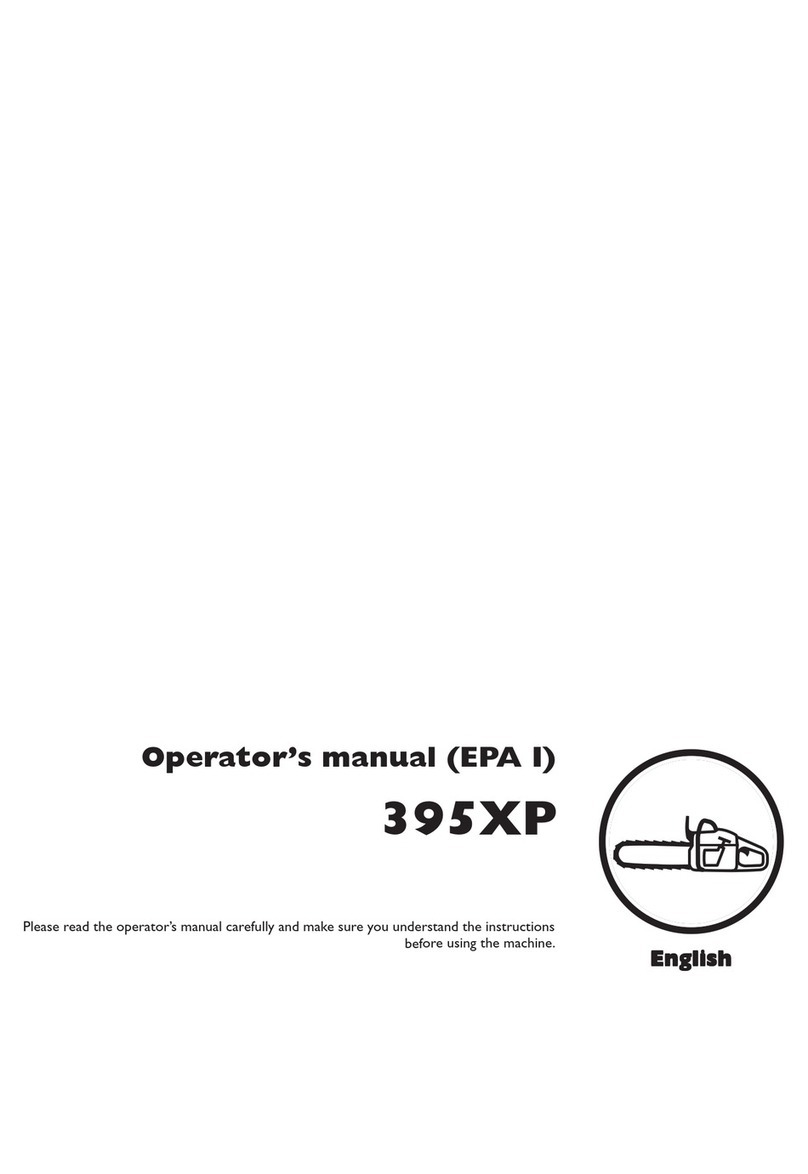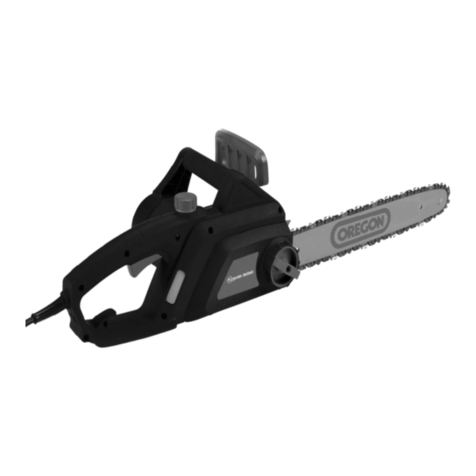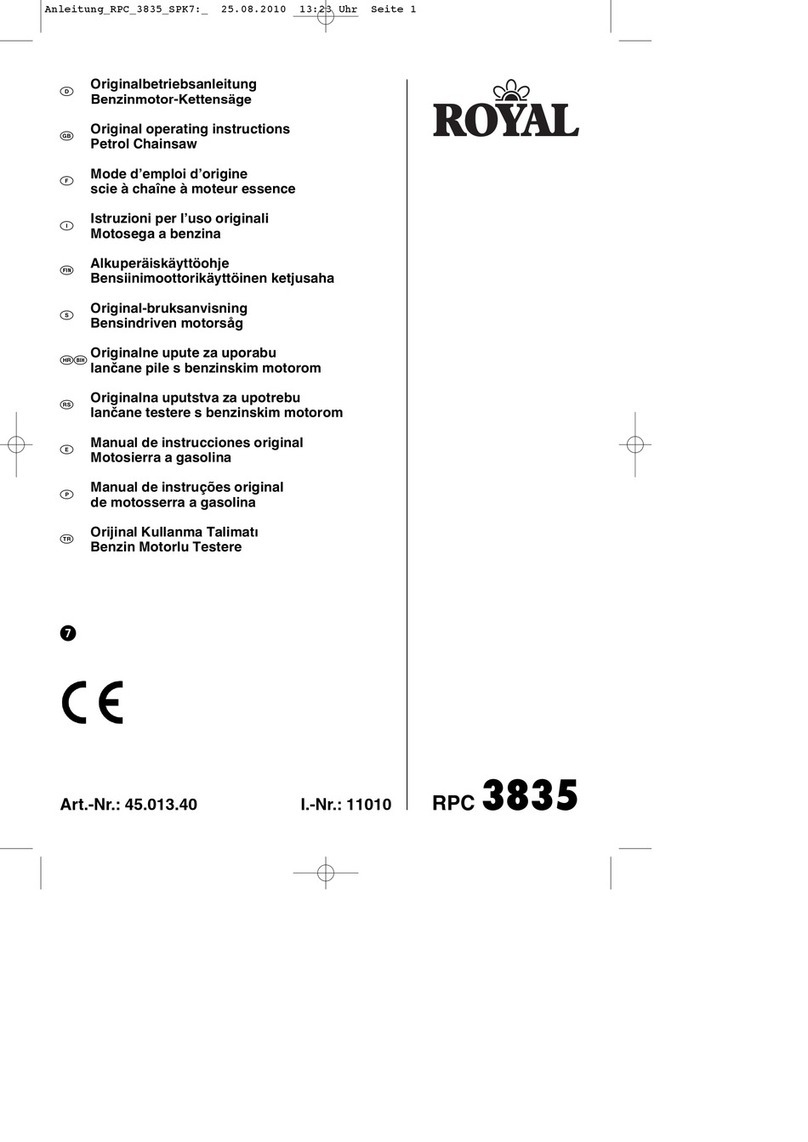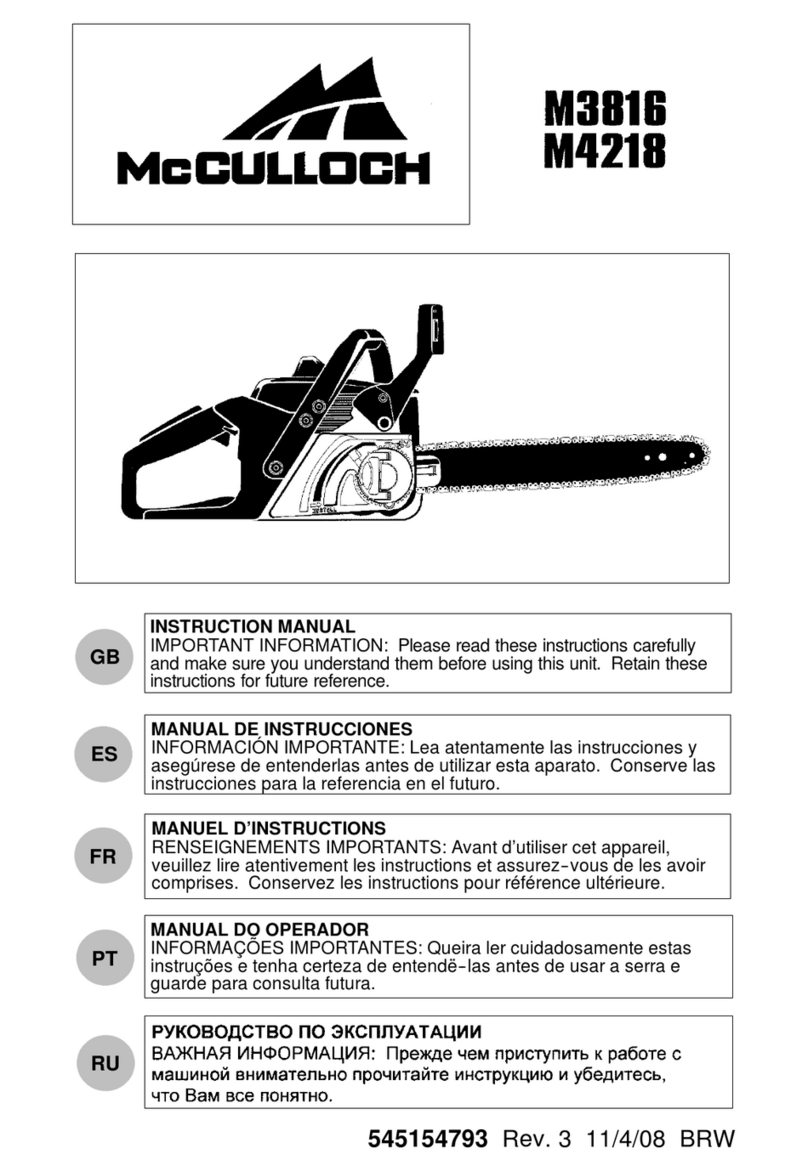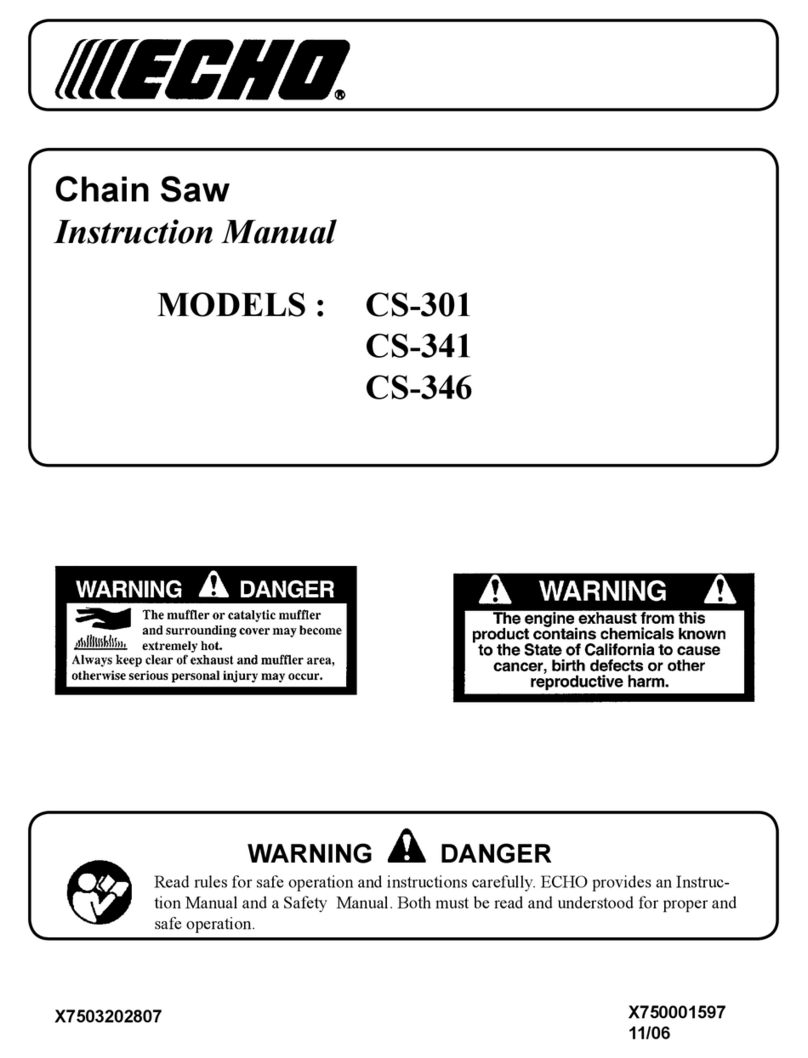
model number 054-5764-4 | contact us: 1.866.523.5218
6
or its own cord. Saw chains contacting
a live wire may make exposed metal
parts of the power tool live and could
give the operator an electric shock.
4. Wear safety glasses and hearing
protection. Further protective
equipment for head, hands, legs
and feet is recommended. Adequate
protective clothing will reduce personal
JOKVSZCZ«ZJOHEFCSJTPSBDDJEFOUBM
contact with the saw chain.
5. Do not operate a chainsaw in a tree.
Operation of a chainsaw while up in a
USFFNBZSFTVMUJOQFSTPOBMJOKVSZ
6. Always keep proper footing and
operate the chainsaw only when
TUBOEJOHPOªYFETFDVSFBOEMFWFM
surface. Slippery or unstable surfaces
such as ladders may cause a loss of
balance or control of the chainsaw.
7. When cutting a limb that is under
tension be alert for spring back. When
UIFUFOTJPOJOUIFXPPEªCSFTJTSFMFBTFE
the spring-loaded limb may strike the
operator and/or throw the chainsaw out
of control.
8. Use extreme caution when cutting
brush and saplings. The slender
material may catch the saw chain and
be whipped toward you or pull you off
balance.
9. Carry the chainsaw by the front
handle with the chainsaw switched
off and away from your body. When
transporting or storing the chainsaw
always apply the guide bar cover.
Proper handling of the chainsaw will
reduce the likelihood of accidental
contact with the moving saw chain.
10. Follow instructions for lubricating,
chain tensioning and changing
accessories. Improperly tensioned or
lubricated chain may either break or
increase the chance for kickback.
11. Keep handles dry, clean, and free
from oil and grease. Greasy, oily
handles are slippery causing loss of
control.
12. Cut wood only. Do not use chainsaw
for purposes not intended. For
example: do not use chainsaw for
cutting plastic, masonry or non-
wood building materials. Use of the
chainsaw for operations different than
intended could result in a hazardous
situation.
13. The use of a residual current device with
a tripping current of 30 mA or less is
recommended.
CAUSES AND OPERATOR PREVENTION
OF KICKBACK
Kickback may occur when the nose or tip of
UIFHVJEFCBSUPVDIFTBOPCKFDUPSXIFOUIF
wood closes in and pinches the saw chain
in the cut.
Tip contact in some cases may cause a
sudden reverse reaction, kicking the guide
bar up and back towards the operator.
Pinching the saw chain along the top of the
guide bar may push the guide bar rapidly
back towards the operator.
Either of these reactions may cause you to
lose control of the saw which could result
JOTFSJPVTQFSTPOBMJOKVSZ%POPUSFMZ
exclusively upon the safety devices built into
your saw. As a chainsaw user, you should
UBLFTFWFSBMTUFQTUPLFFQZPVSDVUUJOHKPCT
GSFFGSPNBDDJEFOUPSJOKVSZ
Kickback is the result of tool misuse and/or
incorrect operating procedures or conditions
General Safety Rules








